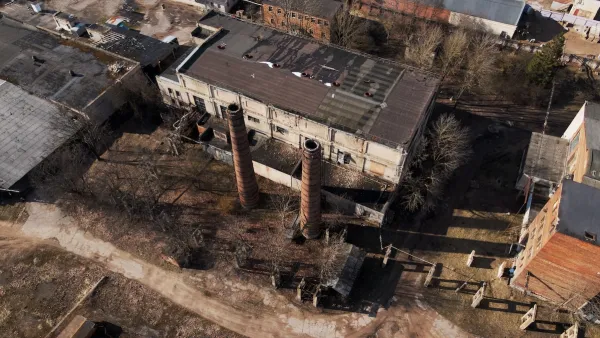Finding new uses for vacant gas stations is a major challenge throughout the U.S. The days of the small, independent service station are fading, yet they often occupy prime, gateway sites. Whether razed or transformed, challenges are formidable.
Commercial real estate reporter, Ronda Kaysen describes the challenges of finding new uses for closed gas stations. She focuses on the transformations of two closed stations in NY.
"More than 50,000 stations have closed since 1991 when there were nearly 200,000 nationwide, according to the National Association of Convenience Stores.
(C)onverting these sites can be challenging. They often are on small lots and may be contaminated by petroleum leaking from underground storage tanks, as was the case in High Falls (in the Hudson Valley).
Petroleum brownfields - ground contaminated or thought to be contaminated by fuel - make up half of the 450,000 brownfields in the country, according to the Environmental Protection Agency."
The High Falls station is being converted at a cost of $300,000 "into a yoga studio, wellness center and a charging station for electric cars (and) has turned the eyesore into a symbol of this struggling community's revival." Offices will be on a second story.
"But it is not always easy to persuade developers to invest in a property that may need costly environmental cleanup. The High Falls station cost the New York State Department of Environmental Conservation more than $100,000 to clean up in 2001."
The Long Island City (Queens) service station has undergone a $1 million transformation into the Breadbox Cafe, but it is part of a long-term plan to build a high rise building on it and a functioning Getty gas station adjacent to it.
"The main challenge is changing people's perception," said the restaurant's architect, Eran Chen, a principal at ODA-Architecture. "How do you create an attractive food space in a place that used to service cars?"
FULL STORY: A Clean New Life for Grimy Gas Stations

Planetizen Federal Action Tracker
A weekly monitor of how Trump’s orders and actions are impacting planners and planning in America.

Congressman Proposes Bill to Rename DC Metro “Trump Train”
The Make Autorail Great Again Act would withhold federal funding to the system until the Washington Metropolitan Area Transit Authority (WMATA), rebrands as the Washington Metropolitan Authority for Greater Access (WMAGA).

The Simple Legislative Tool Transforming Vacant Downtowns
In California, Michigan and Georgia, an easy win is bringing dollars — and delight — back to city centers.

The States Losing Rural Delivery Rooms at an Alarming Pace
In some states, as few as 9% of rural hospitals still deliver babies. As a result, rising pre-term births, no adequate pre-term care and "harrowing" close calls are a growing reality.

The Small South Asian Republic Going all in on EVs
Thanks to one simple policy change less than five years ago, 65% of new cars in this Himalayan country are now electric.

DC Backpedals on Bike Lane Protection, Swaps Barriers for Paint
Citing aesthetic concerns, the city is removing the concrete barriers and flexposts that once separated Arizona Avenue cyclists from motor vehicles.
Urban Design for Planners 1: Software Tools
This six-course series explores essential urban design concepts using open source software and equips planners with the tools they need to participate fully in the urban design process.
Planning for Universal Design
Learn the tools for implementing Universal Design in planning regulations.
Smith Gee Studio
City of Charlotte
City of Camden Redevelopment Agency
City of Astoria
Transportation Research & Education Center (TREC) at Portland State University
US High Speed Rail Association
City of Camden Redevelopment Agency
Municipality of Princeton (NJ)





























